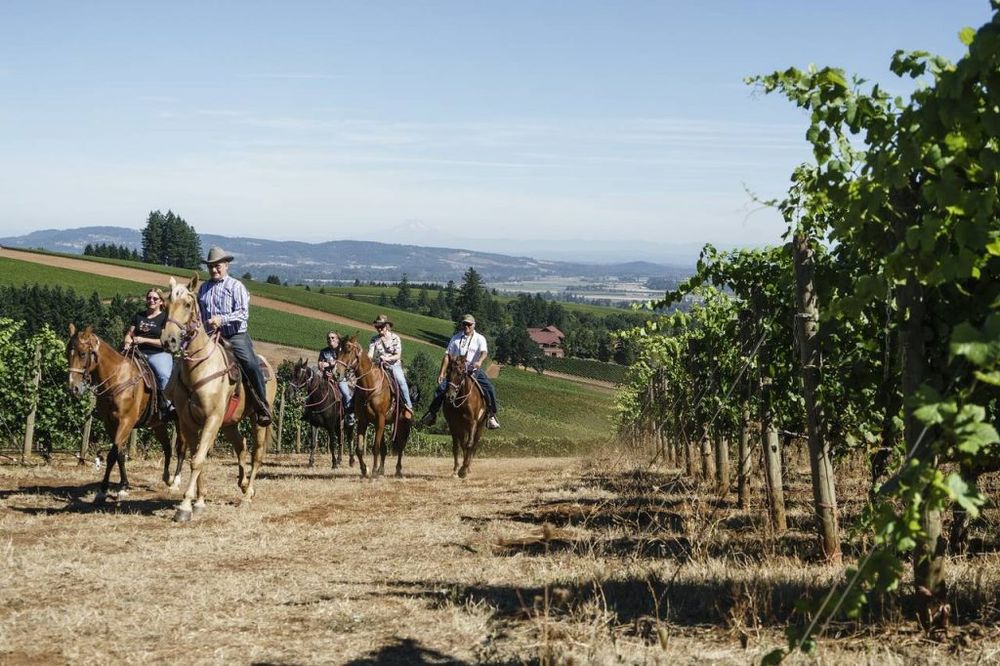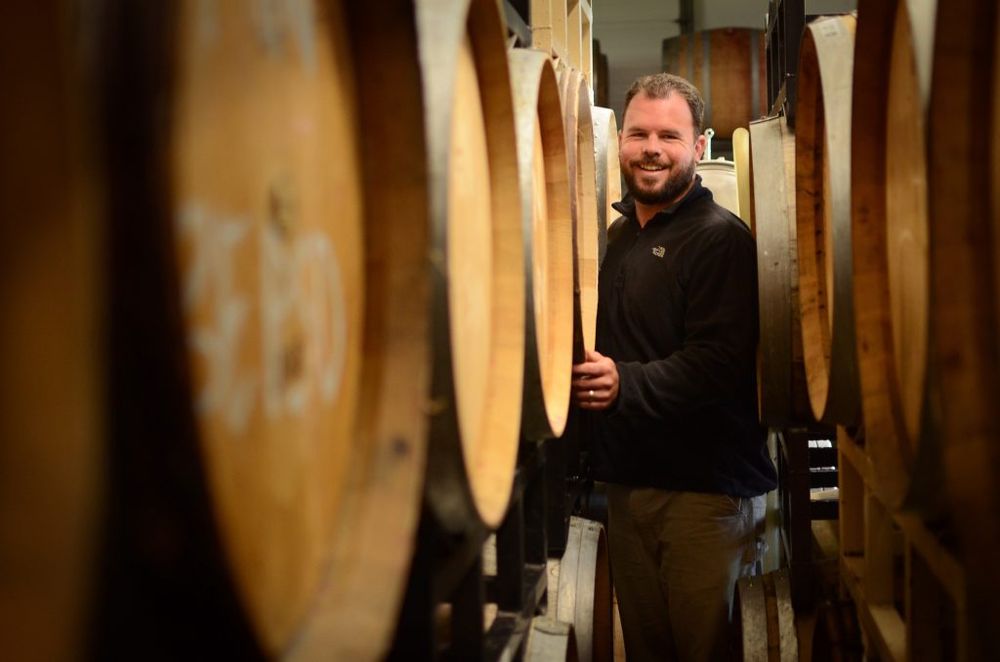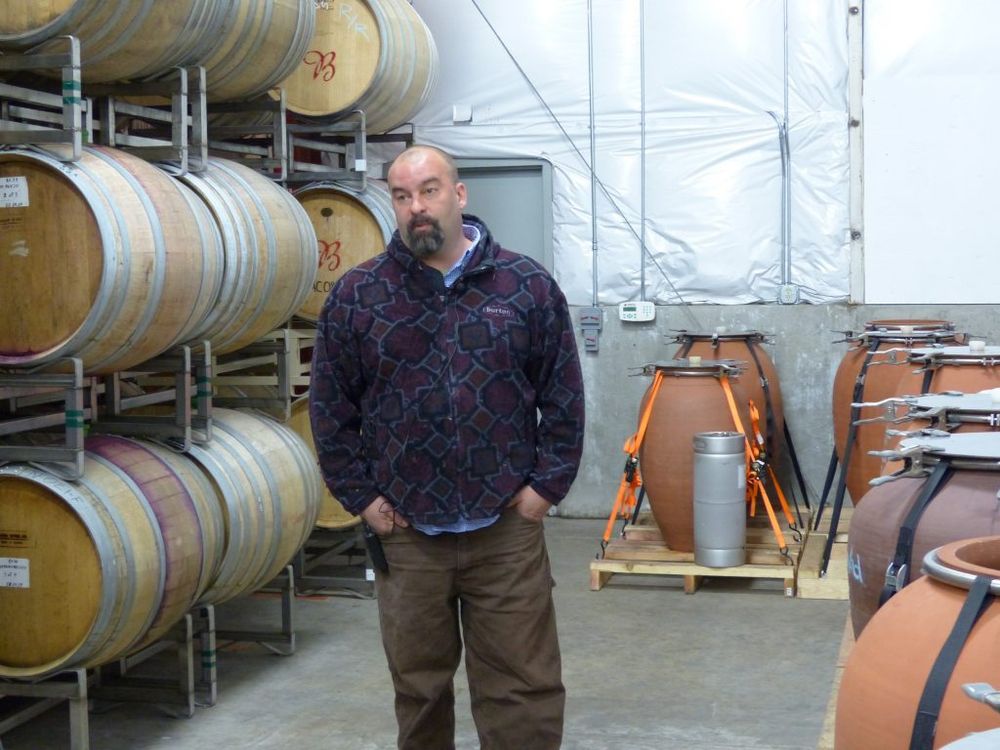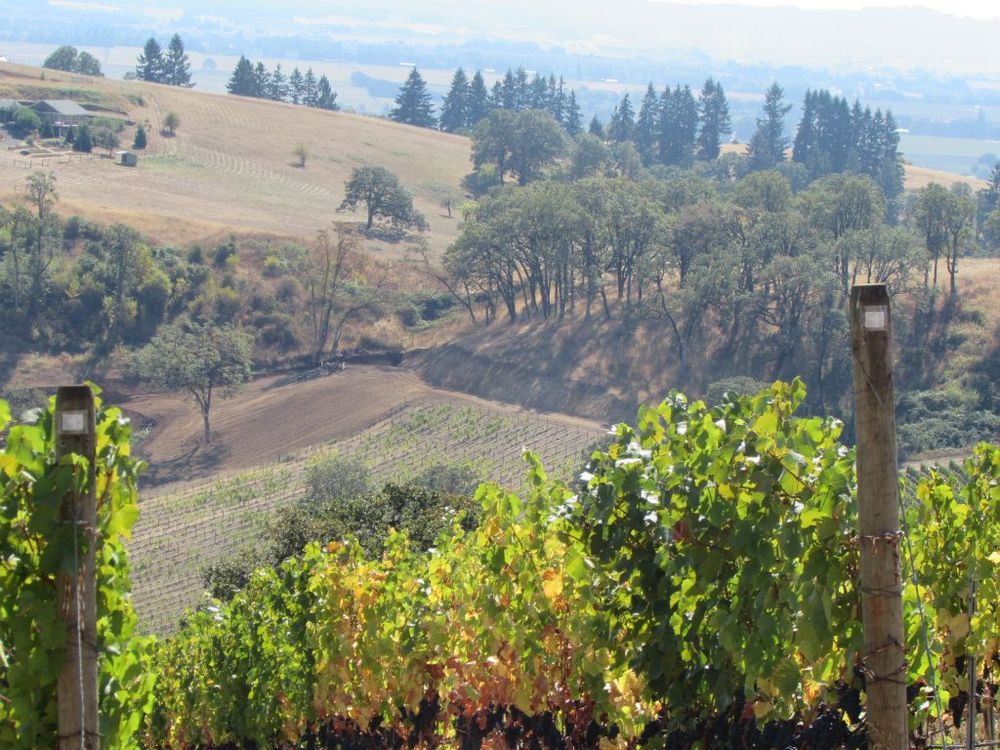Look closely enough and there are many ways to bring a wine to a restaurant table from Oregon. Doug Wregg of Les Caves de Pyrene picks out producers he thinks are celebrating and extolling the hip and happening new wave wine scene in the region.

Willamette Valley is the heart of the Oregon wine industry
Oregon is young wine country. In 1970 there were only five wineries; now there are over 700, mostly based in the Willamette Valley.There is (understandably) not the same rootedness that naturally derives from generations of vine growers in a single region. If one were to generalise we might identify certain recurrent themes – that this is a wine industry where much of the consumption is local, where critical plaudits still help to spur sales, and where “Brand Oregon” is dedicated to promoting the state as the home of world-class Pinot Noir. As a result of this, and in the interest of not breaking a winning formula, there are a lot of identikit wines, the products of stylised winemaking.
When you work to systems, you make systematic wines. Committee wines. Many top Oregon wineries have a vineyard manager and a separate oenologist. Sometimes it seems that wine is “front-loaded” in order to fit in with certain commercial objectives, the needs of customers and markets.
On a previous trip to Oregon I heard more about cooperage than farming, more about technique than spirit. Even when the farming is biodynamic and respectful of the environment and the vineyards look amazing, the wines often taste of their interventions as if they were being pushed to conform to a recognisable “Oregon Pinot Noir style”.
This raises the question about whether Oregon winemakers see their roles more as defending the status quo of the Oregon wine industry by achieving a guaranteed level of consistency and appreciation from consumers, or feel able to question themselves and their wines, and row back on what on perceived certainties. The past and the present is undoubtedly Pinot Noir, the future is very likely still Pinot, but there are different styles to be embraced and other grape varieties to be enthused by.
Going natural
Last month Oregon held its first natural wine fair called Oregon Now comprising 28 wineries. Their mission statement extolled the virtues of diversity: “… a new generation of winemakers have emerged in Oregon informed by the natural wine movement, not dogmatic in approach, but each pursuing an individualistic style. The 28 members of the Oregon Now group make wines from over 30 different grape varieties and in styles that include red, white, pink, orange, petillant naturel, Methode Champenoise, extended skin contact, white grapes as red wine, cider and more.”
These are the winemakers willing to step back in time and look to the future in how they make wine using a whole range of ageing vessels including oak barrique, puncheon, foudre, acacia wood, steel and cement tanks, cement eggs and clay amphora.
They way there are inspired by wines made in “Burgundy, Alsace, Champagne, Loire Valley, Beaujolais, Auvergne, Jura, Northern Rhone, Southern Rhone, Languedoc-Roussillon, Southwest France, white Bordeaux, Piedmont, Liguria, Puglia, SudTirol, Friuli, Slovenia, Mosel, Rheingau, Pfalz, Kremstal, Kamptal, Burgenland and the Douro but the search for Oregon terroir always remains in the fore.”
Here are some of the movers and mini-shakers challenging the perceived Oregon wine orthodoxy.

Chad Stock is one of the leading winemakers looking to shake up Oregon’s wine scene
Chad Stock (Craft Wine Company; Omero Cellars, Minimus Wines) is engaged – in his words – on a “15-year research project”. He makes 30-odd (and some very odd) cuvées each year, matching vines to rootstocks to terroir, as well as experimenting with skin contact, oxidation and brett, and then also fermenting in a variety of containers including acacia, chestnut, foudre and even amphorae.
For all the apparent tinkering and yoking (yoking aside!) Chad’s wine style is unmistakeable. And natural. He loves mouthfeel – and so all ferments are ambient, ageing is on the lees, malolactic conversion is always done, there is no filtration and just a touch of sulphur added before bottling. Chad manages to find the balance in each of his wines with tonal variations on acid, savoury, spice –the result is a mesh and not a mush.
I was particularly taken with some of his reds this time – CMG red from Omero vineyard was a beautiful, high-toned blend of Cabernet Franc, Mondeuse and Gamay Noir, whilst “Noir” mixed Pinot, Gamay and Trousseau to eloquent effect. And just when you thought you had tasted everything along comes “Pinot”, which is a co-ferment of all Pinots (Noir, Gris, Blanc, Meunier and Gouges)!

Jeff Vejr: beautiful understated wines
Jeff Vejr (Golden Cluster) is custodian of the old Coury Vineyard (now David Hill Vineyard), which was planted in 1965 on self-rooted vines to a wide variety of grape varieties with cuttings brought back from Alsace by Charles Coury himself. Jeff began a couple of years ago by releasing a 2013 Semillon and is now also making a Savagnin Rosé and a Flora (a crossing of Semillon and Gewurztraminer). Others, such as a Gouges/Chardonnay, will come on stream soon. The wines are sonorous and saline, beautifully understated, the product of deep roots, a cool vineyard site and minimal intervention.

John and Ksenja House are winemakers at Ovum Wines
John House, in hisOvum Wines project, focuses purely on aromatics, revealing terroir through the conduit of Riesling and Gewurztraminer. His low-intervention production method is a commitment to letting the vintage and vineyard come through, for better or worse. Native ferments, no subtractions or additions, except for SO2 – extended lees contact 8-9 months imbue the wines with textural complexity.
All of this is done in neutral barrels of acacia and oak, as well as cement eggs. The wines possess a balance of sweet fruit with an underpin of thrilling acidity (and low ph), and for want of a better cliché, show old world style with a new world perspective. This illustrates that if one approaches grape varieties with the same respect as Oregon producers already have for Pinot Noir, then one can make world class wines.

Andrew Beckham works largely with wines made in clay
Andrew and Annedria Beckham live on a beautiful property on Parrett Mountain in the Chehalem Mountains. Their vineyards have been only recently planted and grafted, so Andrew sources most of his fruit elsewhere. The A & D Beckham project is devoted to wines made in clay (Andrew is a potter by trade) and to this end they release a Pinot Gris fermented for 30 days on skins, a Pinot Noir (called Creta), as well as Grenache Noir and Vermentino, the latter two hailing from vineyards in the Rogue Valley. There will also be a Syrah/Viognier in this range. The terracotta pots (from amphora and tinajas to Georgian-style qvevri) certainly confer texture and even some flavour to the wines. Andrew is self-taught winemaker and has a purist, almost pioneering approach. The Beckham wines are unique; this tiny estate is one to watch.
Bow & Arrow (Scott Frank) is a so-called urban winery, located in a former bookbinding factory in Portland. Scott contends that Oregon’s climate and geography are perfectly suited to produce wines from Loire grapes. His wines are persuasive proof of this theory! Melon Blanc, Sauvignon, Cab Franc, Cab Sauv and Pinot Noir are sourced from a variety of vineyards (including the legendary biodynamic Johan vineyard). Scott’s wines, fermented with native yeasts and made with minimal intervention, are cooling and bright; as the French don’t say, they possess “le crunch”!
Other wineries doing it for themselves include Analemma, Faux Piste, Johan Vineyards, Swick Wine Company and Hiyu Wine Farm.
Contra Pinot?

The vineyard at Kelley Fox
Then there is Kelley Fox. Kelley’s Pinot Noirs are lucid and transparent. Yet they also have an indescribable wildness to them. Not only do they represent the wider viticultural sub-regions – Dundee Hills for the Maresh and McMinnville for the Momtazi – they particularly showcase the characteristics of the two respective vineyards – red-fruited, brambly and herbal for the former, dark, stonier and tensile in the case of the latter.
That is putting it simplistically, but trying the wines next to each other is a taste revelation.Her hands-on farming allows the vines to flourish in their respective microclimatic environments, and a gentleness of touch (free run juice, fermentation in vat, used barrels) lets the wine rather than the winemaker do the talking.

Kelley Fox’s hands-on approach works in the styles of wine she makes. Photo: Paul Cunningham
These Pinots share certain qualities – both are sappy, (whole-bunch influence here), medicinal and sanguine – the (Occitan) French might say that they exhibit lo sang del pais – the blood of the soil. Kelley’s wines are light (usually around 13%), yet strong at the same time. They are sometimes coiled and introverted, sometimes lyrical, forever fascinating. That is the charm of Pinot: that it wears many guises and mediates the complex nature of the immediate vineyard environment, the soils, and the particular nature of the vintage. Purity is a complex thing.
The Way Forward
Kelley works root to cork, if one may phrase it thus, and feels primarily responsible to her vineyards. In a sense, she is making wine for the vineyards, which are very special places and will always give her something different in every year. Vignerons who are confident (or humble enough) to allow for vintage variation and terroir expression, who are content to channel rather than manipulate, are few and far between, but those that do, are making provocative and rather wonderful wines. Other winemakers who are looking at Oregon’s potential with a fresh perspective (different regions, different soils, different grapes, different clones, different methods), are adding immeasurably to the richness of the narrative of a native wine culture.










































